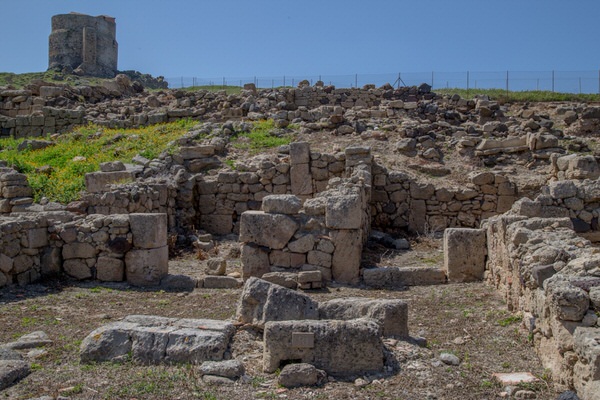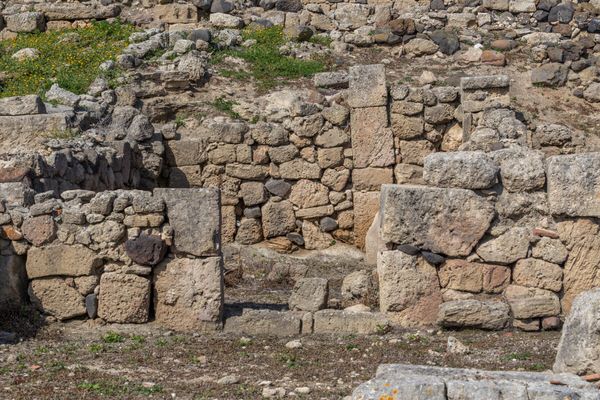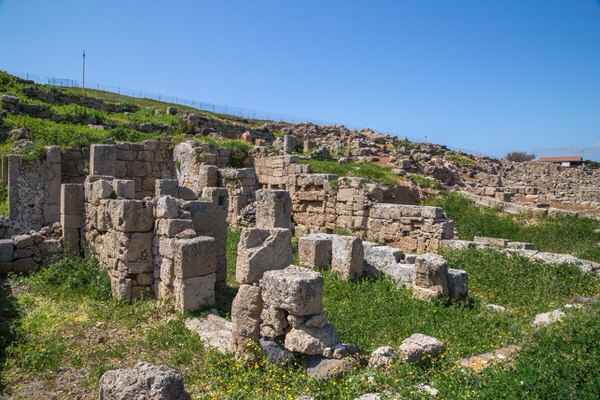Roman houses
Building work on houses in Tharros was complex and articulate. They are difficult to interpret as it was an entire city, excavated decades ago, when the data found was not recorded. The houses were mainly in the western part of the central quarter (fig. 1) and on the eastern slope of the San Giovanni hill (fig. 2).


The special geomorphological shape of the area, with steep slopes (figs. 3-4) affected the layout of the houses built on terraces in the ground, forcing them to use compulsory solutions.


Four main types (figs. 5-7) have been identified from the analysis of the housing maps, where it is possible to carry it out, considering the long matters of life, changes and renovations.



Like most dwellings in Roman cities, the houses had a second floor or a gallery paved in wood; in some cases, existence is proven by the cavity in the walls, that held the beams supporting the floors (fig. 8).

Bibliografia
- M. MARANO, L’abitato punico romano di Tharros (Cabras-OR): i dati di archivio, in A.C. FARISELLI (ed.), Da Tharros a Bitia. Nuove prospettive della ricerca archeologica, Bologna 2013, pp. 75-94.

 VR
VR